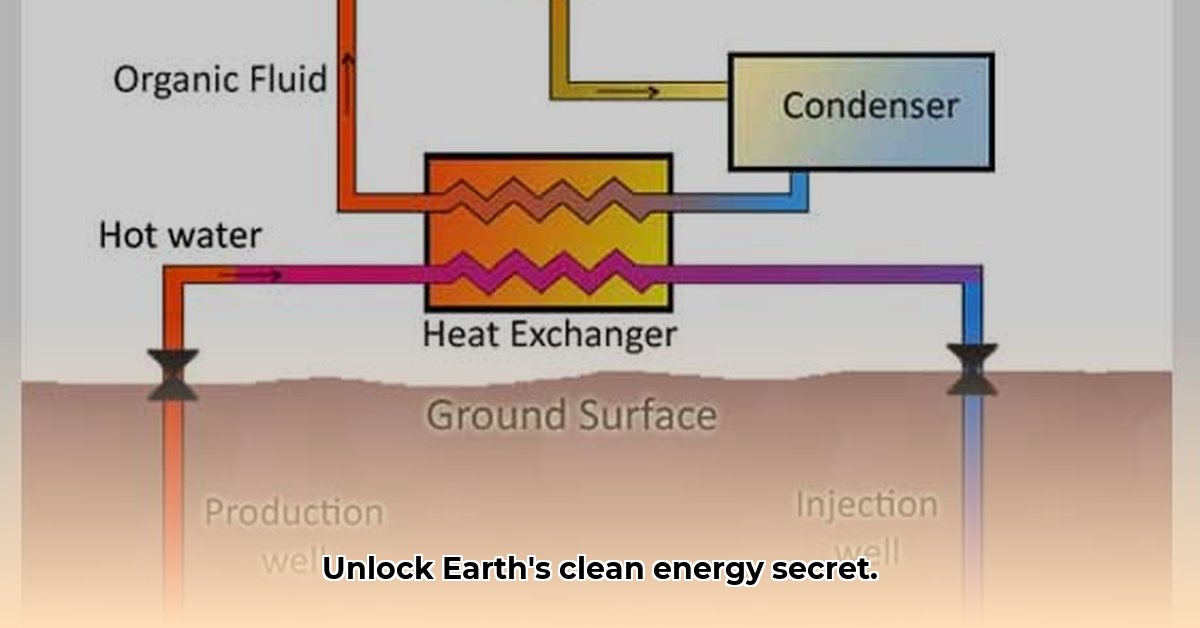Geothermal energy, the heat emanating from our planet’s core, presents a compelling alternative energy source. This article delves into the mechanics of geothermal power plants, exploring the various types, their advantages and disadvantages, global hotspots, and the future of this renewable energy source.
Tapping Earth’s Natural Furnace: How Geothermal Plants Work
Imagine the Earth as a colossal, self-sustaining oven, radiating heat from its core. This geothermal energy, a byproduct of the planet’s formation and the decay of radioactive elements, offers a sustainable energy source. Geothermal power plants are ingeniously designed to capture this subterranean heat and convert it into electricity.
Decoding the Process: From Earth’s Heat to Electricity
Superheated water, sometimes steam, journeys towards the Earth’s surface through fissures and cracks. Geothermal plants tap these reservoirs, using the hot water or steam to generate electricity:
-
Dry Steam Power Plants: The simplest form, these plants directly utilize steam rising from the earth to drive turbines. These plants are rare, requiring a direct source of steam, but boast high efficiency where available.
-
Flash Steam Power Plants: The most common type, these plants bring high-pressure, superheated water to the surface. The sudden pressure drop causes some water to “flash” into steam, which then powers the turbines.
-
Binary Cycle Power Plants: Ideal for lower-temperature geothermal resources, these plants use geothermal water to heat a secondary fluid with a lower boiling point. The secondary fluid vaporizes, creating the steam needed to drive turbines.
Enhanced Geothermal Systems (EGS): Expanding the Possibilities
What if a region possesses hot rocks but lacks sufficient permeable pathways or water? Enhanced Geothermal Systems (EGS) address this by creating artificial reservoirs. Water is injected into hot, dry rocks deep underground, fracturing the rock and creating pathways for water circulation and heat absorption. EGS expands the reach of geothermal technology to areas not traditionally suitable for geothermal power plants, thus broadening the potential of this resource.
Electricity Generation: Completing the Cycle
The heated geothermal fluid—steam or hot water—is channeled through production wells to power turbines connected to generators, producing electricity. The cooled fluid is then pumped back underground via injection wells, establishing a sustainable cycle.
Exploring Geothermal Plant Types: Dry Steam, Flash Steam, and Binary Cycle
Geothermal power plants employ different methods to harness Earth’s heat. Here’s a closer look at the three primary types:
Dry Steam: Direct from the Source
Dry steam plants are the simplest form, directly utilizing naturally occurring steam to spin turbines. While highly efficient, these plants are geographically limited by the scarcity of high-temperature steam resources.
Flash Steam: The Geothermal Workhorse
Flash steam plants bring high-pressure hot water to the surface. The sudden pressure drop “flashes” some water into steam, driving turbines. More common than dry steam plants, they can utilize a wider range of geothermal resources.
Binary Cycle: Maximizing Moderate Heat
Binary cycle plants are designed for lower-temperature resources. Geothermal water heats a secondary fluid, which vaporizes and drives turbines. While generally less efficient with high-temperature resources, they expand access to geothermal energy in areas with more moderate heat levels.
Comparing the Technologies: A Quick Glance
| Feature | Dry Steam | Flash Steam | Binary Cycle |
|---|---|---|---|
| Resource Temperature | Highest | High | Moderate |
| Efficiency | High | Medium-High | Medium-Low |
| Complexity | Simple | Moderate | Moderate |
| Resource Availability | Limited | Common | Widespread |
Geothermal Energy: Weighing the Pros and Cons
Like any energy source, geothermal has its advantages and disadvantages:
The Advantages: Clean, Reliable, and Consistent
- Renewable and Sustainable: Geothermal energy relies on Earth’s internal heat, a continuously replenished resource.
- Reliable and Consistent: Unlike intermittent renewables like solar and wind, geothermal provides a constant baseload power supply.
- Small Environmental Footprint: Geothermal plants require relatively less land compared to other renewable options.
- Cost Stability: Geothermal energy provides predictable energy prices, unaffected by fluctuating fuel costs.
The Disadvantages: Location and Cost
- Geographic Limitations: Geothermal resources are concentrated in specific geological areas.
- High Initial Investment: Constructing geothermal plants involves significant upfront costs.
- Induced Seismicity: While generally minor and rare, EGS can sometimes induce small earthquakes.
- Careful Resource Management: Over-extraction can deplete geothermal reservoirs, underscoring the need for sustainable practices.
- Minor Emissions: Geothermal plants may release small amounts of greenhouse gases, although significantly less than fossil fuel plants.
Geothermal Around the Globe: Mapping the Hotspots
Geothermal resources are clustered in regions with unique geological traits:
- The Ring of Fire: This volcanically and seismically active zone around the Pacific Ocean hosts significant geothermal resources, utilized by countries like the Philippines, Indonesia, and New Zealand.
- Western North America: Regions like California and Nevada are rich in geothermal resources, with The Geysers in California standing as the world’s largest geothermal complex.
- Iceland: This island nation extensively utilizes geothermal energy for electricity generation and heating.
- East African Rift Valley: Kenya leads geothermal development in Africa, showcasing the resource’s potential for developing nations.
- Italy: The Larderello geothermal complex reflects Italy’s long history of geothermal energy use.
From Hotspot to Power Plant: The Geothermal Journey
Tapping geothermal energy involves drilling deep wells into reservoirs of hot water and steam. This geothermal fluid is then used to drive turbines and generate electricity.
Environmental Considerations: Balancing Benefits and Impacts
While generally environmentally friendly, geothermal projects require careful consideration. Potential environmental impacts include land use changes, water usage, and the possibility of induced seismicity. Research and mitigation efforts are crucial for ensuring sustainable geothermal development.
The Future of Geothermal: Innovation and Expansion
The future of geothermal energy appears promising, driven by ongoing research and technological advancements:
- EGS Expansion: EGS has the potential to unlock vast geothermal resources in previously inaccessible areas, significantly expanding the global geothermal footprint.
- Supercritical Geothermal Systems: Research into supercritical geothermal systems, which could potentially yield significantly more energy from deeper within the earth, represents a nascent but exciting area of exploration.
- Hybrid Technologies: Combining geothermal with other renewable sources, like solar and wind, could lead to more efficient and resilient energy systems.
- Advanced Drilling Techniques: Improved drilling technologies are reducing costs and minimizing the environmental impact of geothermal projects.
Geothermal energy offers a compelling pathway towards a sustainable energy future. By addressing the challenges and investing in innovation, we can unlock the full potential of this remarkable resource, harnessing the Earth’s heat for a cleaner and more sustainable world.
- How Did Charles F. Brush Discover Wind Energy Tech? - November 19, 2025
- Wind Energy Vertical: Weighing the Pros and Cons of Wind Power - November 16, 2025
- How Much Energy Does a Wind Turbine Actually Create? - November 14, 2025
















